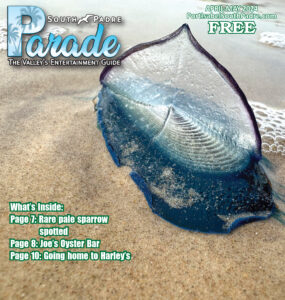By Rene Torres
The people that went through the storm of 1933 probably said that nothing good came out of that natural disaster. In most cases, hurricanes, regardless of their magnitude, leave a legacy of some form of destruction.
The storm of ’33 was not much different than any other when it came to raising havoc, with one exception—it did leave a mysterious plant never seen before in this area. To the people of Port Isabel, it was a gift from the gods. In actuality, however, it was a coconut palm sprout that made its way to this section via the sea.
At first, to the naked eye, it just looked to be a weed of some kind, but after close inspection, it was determined that, yes indeed—Port Isabel and the Valley had their first coconut palm sprout.
The sprout was identified and planted with the idea that it would make permanent residency in the section. In history, pioneers are typically admired – those who take the first step in doing something bold and/or different.
In this case, the people of Port Isabel were the pioneers— taking a chance in experimenting with the growth and development of the coconut palm. And in this case, the first to take the plunge was Carlos from “Carlos Café” of Laguna Heights. He was the first to plant the sprout, exactly where, however, is unknown. What is known is that the sprout grew and developed into a mature tree, proving that the palm of this nature had a future in the Valley.
Although many varieties of palms had been grown in the Valley for many years, coconut palms had never been planted before this time.
Admiring the success that Carlos had, through the efforts of Mr. Alford C. Uhl, Chairman of the Community Service of the Rotary Club, 60 one-year-old sprouts were purchased from Miami.
Some of the sprouts were planted in the then new Rotary Club Park, which was sponsored by that club. The Rotary jointly cared for the park with the Port Isabel Garden Club.
Other plants made their way to private homes. Ted Hunt, Dr. and Mrs. J. A. Hockaday, and B.B. Burnell also participated in the effort. According Mr. Uhl, all palms at those locations took root and began to grow skyward.
Because little was known about the plant in this area, Uhl had to do some digging/research in order to understand its reproduction process. Unlike other palms from this section, he found that coconut palms displayed an unusual feature when it came to reproducing – sprouting from the coconut itself. At the time of sprouting, a hard, fibrous shell about two inches’ thick forms about the outer shell of the coconut, with the plant sprouting from one side and roots to the other.
He went on to learn that the first three months were critical to the plant’s survival. After one year, the plant could pretty much be self-sustained, given the right conditions. However, as in any new birth, it yearned for love and care; the first three months required daily watering and there after every other day.
The plant also pleaded with its owners to have patience, for they would not see the mature fruit until five to seven years from its planting.
Want the whole story? Pick up a copy of the South Padre Parade, or subscribe to our e-Edition for FREE by clicking here



Comments